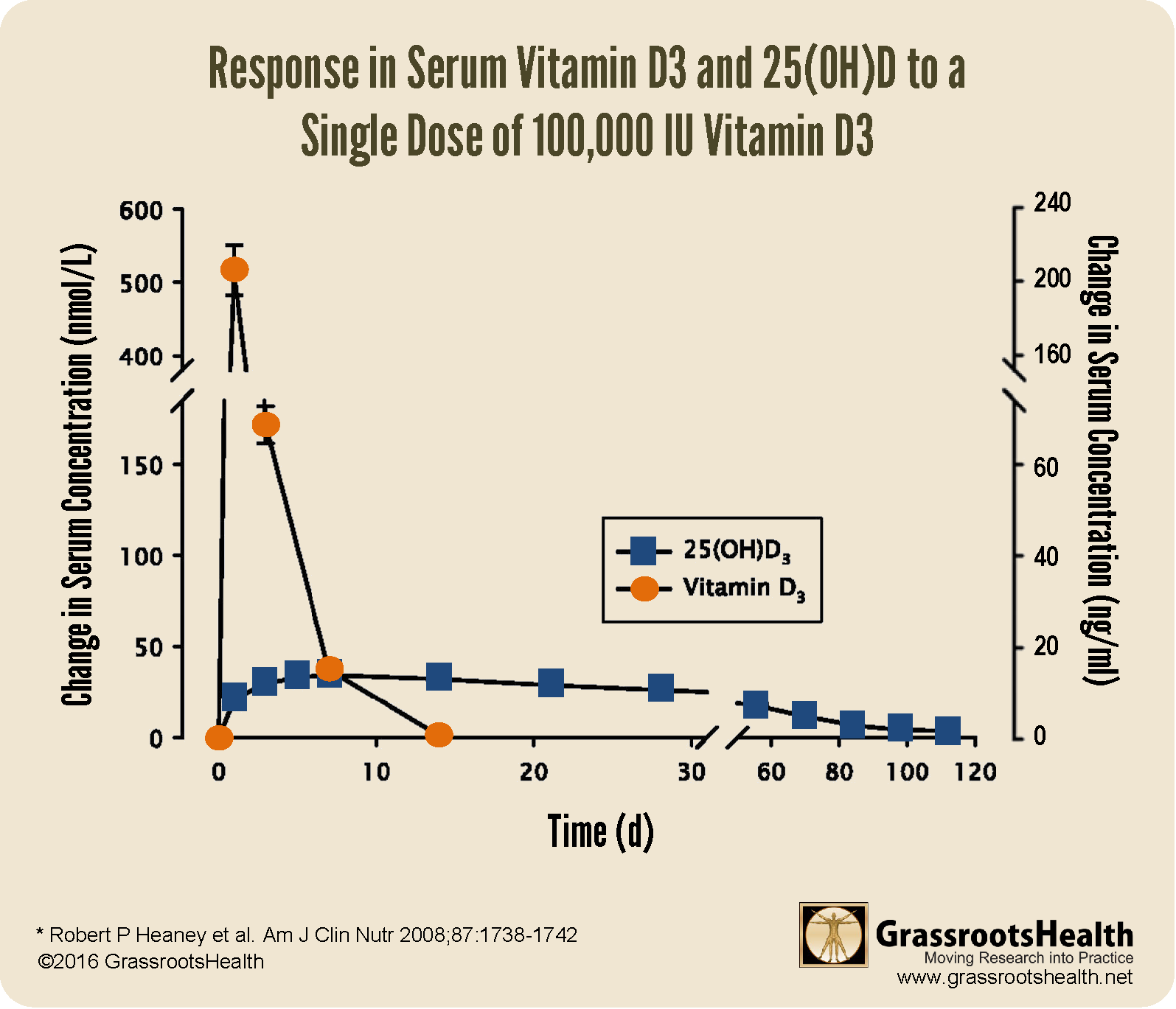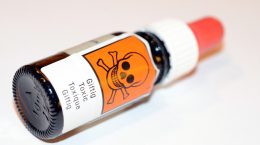Published on December 13, 2021
What to consider if a vitamin D result is higher than you want or expected, and the steps to take to safely lower your level, should you choose to do so
Key Points
- Before changing your daily dose, consider whether a recent change in intake, such as an extra-large dose during a sickness or a recent vacation to a sunny location, may have caused a temporary high level. If this is the case, the vitamin D level will naturally decline back to its baseline or maintenance level.
- If your intake has been consistent, reducing your dose by 25-50% may help, followed by a re-test after about 3 to 6 months to assess your response to the lowered dose; re-testing sooner may not be optimal, as it can take at least 2-3 months for a vitamin D level to fully respond to a new intake
- If the vitamin D result is over 200 ng/ml and vitamin D toxicity is a concern, it may be best to consult a health care provider who can monitor serum calcium levels to help ensure that toxicity is avoided
 In a recent post, we discussed the rising distribution of vitamin D test results among participants in the GrassrootsHealth cohort from 2020 to 2021, with the average result increasing from 54 ng/ml (135 nmol/L) to 61 ng/ml (152 nmol/L). In 2021, through the beginning of December, 44% of results posted were above 60 ng/ml! While it is great news to see that fewer participants have vitamin D levels that are too low, this increases the chances that a vitamin D level may be higher than what a participant desires.
In a recent post, we discussed the rising distribution of vitamin D test results among participants in the GrassrootsHealth cohort from 2020 to 2021, with the average result increasing from 54 ng/ml (135 nmol/L) to 61 ng/ml (152 nmol/L). In 2021, through the beginning of December, 44% of results posted were above 60 ng/ml! While it is great news to see that fewer participants have vitamin D levels that are too low, this increases the chances that a vitamin D level may be higher than what a participant desires.
Keep in mind that vitamin D toxicity is difficult to achieve, especially at vitamin D levels below 200 ng/ml (500 nmol/L), however, it is important to know the signs and when to be concerned. Toxicity causes high calcium levels, called hypercalcemia, with symptoms include loss of appetite, feeling very thirsty, weight loss, constipation or diarrhea, abdominal pain, musculoskeletal pain, or feeling sick, confused, or tired.
What if a Lower Vitamin D Level is Desired?
It is obvious that, in order to decrease vitamin D levels, vitamin D input must be reduced. Most often that will mean cutting back on the dose of supplemental vitamin D, and possibly sun exposure as well, while still getting a minimum amount of daily vitamin D. Maintaining a minimum daily intake of vitamin D3 is important, even when the goal is to decrease vitamin D levels, due to the fact that many cells and tissues, such as breast, colon, prostate, and brain, take in, convert, and use vitamin D3. It is through this process that vitamin D3 itself can help enable the cells to fight against infections, disease, and autoimmune disorders.
Before changing your daily dose, consider whether a recent change in intake, such as an extra-large dose during a sickness or a recent vacation to a sunny location, may have caused a temporary high level. If this is the case, the vitamin D level will naturally decline back to its baseline or maintenance level.
If your intake has been consistent, reducing your dose by 25-50% may help, followed by a re-test after about 3 to 6 months to assess your response to the lowered dose. It is important to test again to make sure you haven’t overcorrected and caused your levels to be lower than you want.
If the vitamin D result is over 200 ng/ml and vitamin D toxicity is a concern, it may be best to consult a health care provider who can monitor serum calcium levels to help ensure that toxicity is avoided.
How Long Does it Take to Lower a Level?
It may take at least 2-3 months for a vitamin D level to fully respond to a new intake, as illustrated in the chart below showing the response in both the vitamin D3 level (with a half-life of roughly 24 hours) and 25(OH)D (with a much longer half-life of 2-3 weeks) to a single dose of 100,000 IU vitamin D3.
In the chart, notice how slowly the line representing the 25(OH)D level (with the blue boxes) declines from its peak after a single large dose of vitamin D3. In this study, it took only 7 days for the 25(OH)D level to peak after the single large dose was given, but it took 105 days after the peak for the 25(OH)D level to return to the level it was before the dose was given.
Measuring Levels is Essential to Ensure You Are Taking the Right Amount of Vitamin D
 Having and maintaining healthy vitamin D levels and other nutrient levels can help improve your health now and for your future. Choose which to measure, such as your vitamin D, omega-3s, and essential minerals including magnesium and zinc, by creating your custom home test kit today. Take steps to improve the status of each of these measurements to benefit your overall health. You can also track your own intakes, symptoms and results to see what works best for YOU.
Having and maintaining healthy vitamin D levels and other nutrient levels can help improve your health now and for your future. Choose which to measure, such as your vitamin D, omega-3s, and essential minerals including magnesium and zinc, by creating your custom home test kit today. Take steps to improve the status of each of these measurements to benefit your overall health. You can also track your own intakes, symptoms and results to see what works best for YOU.
Enroll and test your levels today, learn what steps to take to improve your status of vitamin D (see below) and other nutrients and blood markers, and take action! By enrolling in the GrassrootsHealth projects, you are not only contributing valuable information to everyone, you are also gaining knowledge about how you could improve your own health through measuring and tracking your nutrient status, and educating yourself on how to improve it.






